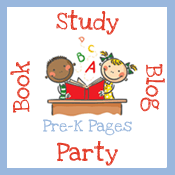Chapter Ten of Literacy Beginnings
As I’m a visual guy (I love charts, graphs, and anything that organizes information for me), I’ve decided to break my discussion of this chapter into Theory and Practice as it relates to the classroom.
1. Story Awareness
Theory: Quite simply, story awareness is the understanding that books have meaning and tell stories.
In Practice: Wordless books are an amazing way to promote story awareness. Fountass and Pinell suggest many, but my favorites are Alexandra Day’s Carl series
2. Language Awareness
Theory: When children begin ‘talking like a book,’ using the pictures to retell familiar stories, they are beginning to understand that written text, when read aloud, sounds different from ordinary speaking.
In Practice: Nothing helps develop the understanding of language awareness more than interactive read-alouds (Chapter Eleven dives deeper into this practice). The authors suggest simple stories, but also encourage us to find those with more complex language to "stretch children’s knowledge of complex sentences, such as those in Lilly’s Purple Plastic Purse
Fountas and Pinnell also suggest finding several books in a series (such as Tacky the Penguin
I found this video of a teacher doing a read aloud in a first grade classroom in Deleware. It really illustrates the ‘interactive’ part of reading aloud.
3. Print awareness
Theory: When children learn to enjoy stories being read aloud, they begin to understand a multitude of concepts of print. The book has a wonderful bulleted list of the plethora of concepts even the youngest learners begin to grasp (page 110). They call their list ‘early reading behaviors’ and stress the internalization of them.
In Practice: Big books, big books, BIG BOOKS! Kids adore big books. The pictures are giant… so are the words. Big books give teachers a whole lot of bang for the buck (they’re usually expensive, but I’ve found Scholastic will let you use points to order them for free). What better way to explicitly model concepts of print as well as introduce comprehension strategies than with pictures and text easily seen by every child.
As we read aloud, it’s important to remember to stop and point out details we may find obvious. During the first few weeks of kindergarten, I always make a point to talk about the spaces in between words. I often point to each word as I read it aloud, reinforcing one to one correspondence. If I have children that have little exposure to books, I will talk about the cover, how I read the text (direction and return sweep), and turn the page. Every part of reading the book is a ritual to be explained, enjoyed, and exalted.
Finally, as they do with every chapter, Fountas and Pinnell summarize the key points of the chapter for the reader... always a nice touch with a large text.
Tomorrow, in Chapter Eleven, we’ll look more closely at the heart of every early childhood classroom – the interactive read-aloud.
Grab the button below:















5 comments:
I enjoyed your review, thanks! I had not realized the importance of wordless books. I used a few but now I can't wait to get more of these. I am so glad to have others' thoughts and opinions, it is helping me focus. Keep it up!
Stephany in GA
Great summary Matt! I didn't think it was long at all :) I am known for being too wordy, I think I need a personal editor! I love wordless book, they are so powerful and can really help kids grasp the concept of "story". By using their own words to tell the story they gain confidence as readers because there are no wrong answers. Wordless picture books are also great for second language learners to develop vocabulary and oral language.
Thanks for sharing and linking up!
Vanessa @pre-kpages.com
Great summary! I have found wordless books useful in upper grades as well.Using them for helping students with predicting and the more complex task of inferring is fantastic because the words don't get in the way. I'm really enjoying reading the posts on the blog bookstudy! Thanks for sharing!
Susan
http://thebookmavenshaven.blogspot.com/2010/06/power-of-word-less-book.html
I do love wordless books. The "Carl" books are favorites. I also like books by Peter Spier. His illustrations are full of details and he uses multiple panels (like a comic book) to provide action. Great summary, Matt.
I loved the video you shared! I love watching other teachers teach. I feel like I always learn something new. A new strategy or a new way to word things, etc. Thanks for sharing.
Post a Comment